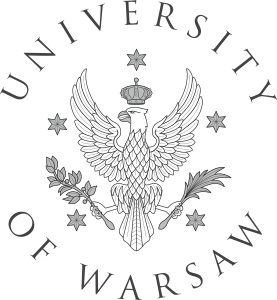The Centre of New Technologies invites to a seminar by
Prof. Michael Feig
Michigan State University, USA
Title: Cellular crowding near membranes: Implications for biomolecular diffusion and clustering
Date: 20 December (Friday) 2019 at 12 p.m.
Venue: Centre of New Technologies, Banacha 2C,
Lecture Hall 0142 (ground floor)
Host: Prof. Joanna Trylska
The interior of biological cells is highly crowded with very high macromolecular concentrations that impact biomolecular stability, diffusion, and solubility. While there is some understanding of these effects inside the cytoplasm, very little is known how the presence of membrane surfaces modulates crowding effects. Biological membranes represent the outer boundary of cells, but they are also present inside cells to contain organelles and in the endoplasmic reticulum or Golgi apparatus. To gain insights into how a crowded environment may interact with membrane surfaces, results from computer simulations of concentrated protein solutions near phospholipid bilayers over microsecond time scales are presented1. The main insight is that the presence of the membrane appears to create a protein depletion zone at the membrane surface that leads to increased clustering and slower diffusion away from the membrane but allows proteins that enter this zone to overcome the slow diffusion that is otherwise encountered in the crowded bulk environment. In addition, proteins that do interact with the membrane surface appear to induce curvature. The finding is similar to crowding-induced membrane bending reported previously but without requiring specific membrane-interacting protein domains. The results are further interpreted via coarse-grained models to access larger spatial and temporal scales and results with pure lipid bilayers are compared with simulations where an integral membrane protein was embedded into the bilayer.
1G. Nawrocki, W. Im, Y. Sugita, M. Feig: Clustering and Dynamics of Crowded Proteins near Membranes and Their Influence on Membrane Bending. PNAS (2019), 116, 24562-24567

